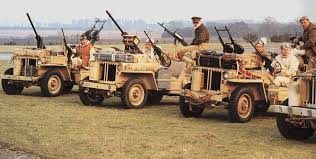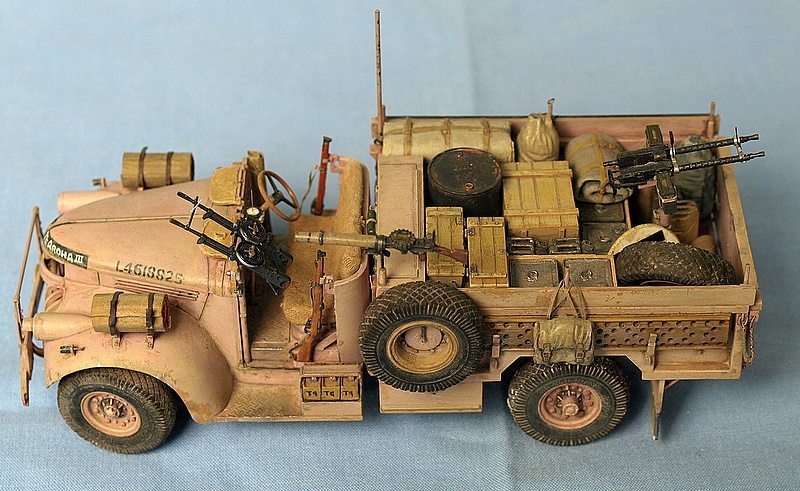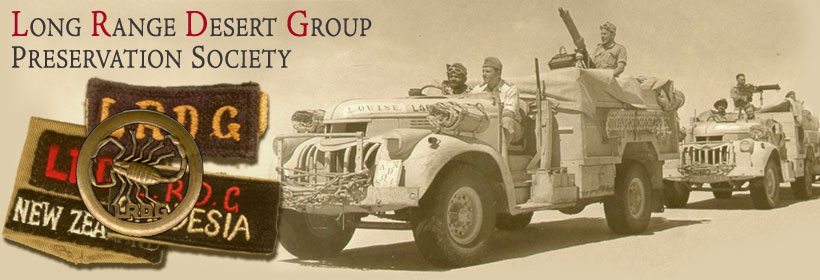
Author Mike Moran does his leg work here and puts together an engrossing read. Who were these men of the LRDG? The essence of these desert fighters was captured in a statement made by the Adjudant of the Reinforcement Training Depot to a Major Leo Capel, once in charge of a LRDG unit, “they’re not the usual type: They’re sort of different.” Different they were. It took a breed of man who could travel the desert and be without quick resupply. He had to rely on his team and they upon him.
Sting of the Scorpion is an epic account of Britain’s Long Range Desert Group. Author Mike Moran of the book Daggers Drawn gives us a detailed view into what it was like to work during this period of time…the infancy of the group and what it would become. From it’s early beginnings until the time the split up in 1945, the LDRG was the original Special Forces group carrying out many amazing raids with their men, guns and vehicles.
Brave men, or they are called , “gypsy soldiers’ who fight against Rommel’s Afrika Korps and roam the vast desert wastelands looking for a fight with anyone against them. They use anything and everything to fight and win. From desert mats used to extricate themselves from deep sand or oil cooled machine-guns, our warriors cross desert wastes, study maps and in order to track enemy movements so they can kill them and disappear back over the sand hills and into the wild expanses of trackless earth.
The LRDG membership if filled with rugged and fearless men; a colorful lot made of mostly British, Australian and New Zealanders who make up her ranks. They dress not like a British trooper but mix in with the locals by donning their keffiyehs and make daring raids all while trying to extricate themselves from the entrapping sand and sandstorms. At one point they must abandon their vehicles and enter deep into enemy territory. On foot, they weighted themselves down with over 70 lbs of gear, with enough food to last 10 days as they moved across the earth in order to seek out enemy to kill. The men of the LRDG were operating 100 miles behind enemy lines in places like Lebanon, Egypt, and Libya and other vast wastelands They used pack-mules and jeeps for reconnaissance. Many of the men of the LRDG were experts in desert navigation and so they worked to navigate their spies bound for missions and Special Air Service members along their way. They worked hard and had many losses in order to ensure David Stirling’s SAS raids were possible.
Sting of the Scorpion begins its story with a letter from Major General David Lloyd Owen, the former Commanding Officer of the LDRG. He writes about the strong esprit de corps of the men who were part of the group. Officers and men made up her ranks but they worked as equals because they had no other to rely on: from the Southern Rhodesians, the 2nd New Zealand Expeditionary Forces, the Corps of the British Army and the 1st Calvary Division.
The LDRG operated not only in the deserts but through places like Albania, Yugoslavia and Italy. Morgan writes about the adventurous spirit within the British heart. The SAS regiment could never have existed were it not for the LRDG. Many many decades later remnants of their old lorries would be discovered to give evidence to how far they traveled, battling the German and Italian armies. In 1983, members of the LDRG had heard the story of a rust heap of a truck discovered in the Egyptian desert. Money was raised by old members to bring it home to England and restore it as a museum piece. Thousands of passing Bedouin had passed this old vehicle that had lain for 40 years.
One of the LRDG’s Chevrolet WB trucks is displayed in the Imperial War Museum in London. The LRDG Association recovered it from the Libyan desert in 1983. The Sting of the Scorpion covers the beginning of many of the units journeys and battles on trackless terrain as they fight to regain land and supplies taken by the Italian invasion of Egypt and it ends with unis destroying bridges in Yugoslavia and finally disbanding after turning in their steeds. For those who want an excellent book to read, this is it.
Model By Minorhistorian (Own work) [CC BY-SA 3.0 (http://creativecommons.org/licenses/by-sa/3.0) or GFDL (http://www.gnu.org/copyleft/fdl.html)], via Wikimedia Commons





